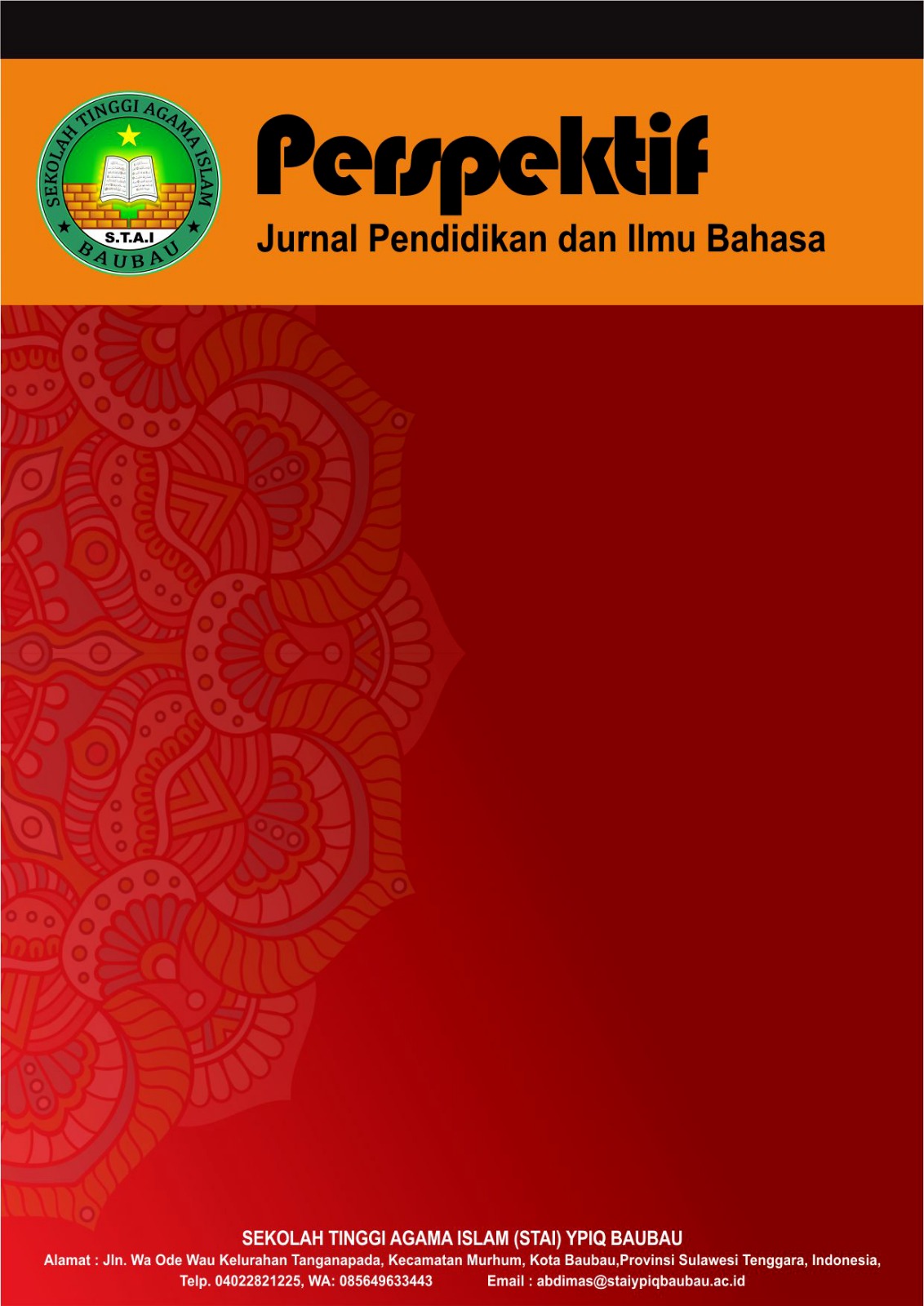Analisis Kalimat Perundungan dalam Film Die Welle
DOI:
https://doi.org/10.59059/perspektif.v3i3.2656Keywords:
Bullying, Bullying Sentences, Die Welle FilmAbstract
The objective of this study was to identify the forms of bullying sentences in the film "Die Welle" and to analyze the meaning of these sentences based on the theory of critical discourse analysis by Teun A. van Dijk. A descriptive qualitative method was employed in this study, with data consisting of 18 sentences containing elements of bullying found in the film "Die Welle." The analysis was carried out by identifying themes, narrative structures, as well as semantic, syntactic, stylistic, and rhetorical elements in each sentence. As a result of the analysis, three main forms of bullying sentences were identified: (1) direct verbal insults in 12 sentences or 66.7%; (2) physical threats in 5 sentences or 27.8%; and (3) emotional outbursts in 1 sentence or 5.5%. Based on van Dijk's theory, it was found that the bullying sentences in this film not only represent verbal aggression but also reflect the use of language as a tool of power and dominance within group dynamics. Thus, the film "Die Welle" demonstrates that bullying is not merely an individual act but also part of a social structure that is formed and sustained through discursive practices.
References
Alhadi, M. S., & Muttaqin, F. A. (n.d.). Implikasi pembullyan terhadap kesehatan mental, pendidikan dan kesejahteraan korban dan pelaku. Jurnal Hukum Progresif, 7(2). https://oaj.jurnalhst.com/index.php/jhp/article/view/812
Apriliany, L. (2021). Peran media film dalam pembelajaran. Prosiding Seminar Nasional Pendidikan Program Pascasarjana Universitas PGRI Palembang, 15–16, 191–199. https://jurnal.univpgri-palembang.ac.id/index.php/Prosidingpps/article/view/5605
Aruan, L. (2010). Analisis kesalahan kalimat bahasa Jerman dengan menggunakan Baumdiagramm oleh mahasiswa bahasa Jerman (Studi kasus pada mata kuliah Linguistik: Syntax). Bahas: Jurnal Fakultas Bahasa dan Seni Universitas Negeri Medan. https://jurnal.unimed.ac.id/2012/index.php/bahas/article/view/2613
Arya, L. (2018). Melawan bullying: Menggagas kurikulum anti bullying di sekolah. Jurnal Pendidikan. CV Sepilar Publishing House. https://www.researchgate.net/publication/380073099
Auliya, H., & Palupi. (2022). Analisis isi kualitatif flaming sesama perempuan pada kolom komentar di akun @Reemar.Official18. Jurnal Keilmuan dan Keislaman, 1(3), 164–177. https://doi.org/10.23917/jkk.v1i3.21
Boston Children’s Hospital. (2014). Mobbing: Je länger, desto schlimmer. Langzeitstudie warnt vor anhaltenden Schäden durch Mobbing bei Kindern. Scinexx.de. https://www.scinexx.de/news/medizin/mobbing-je-laenger-desto-schlimmer/
Erina, A., Aulia, N. N., & Ipah, S. (2023). Identifikasi fenomena perilaku bullying pada remaja. Jurnal Bimbingan dan Konseling, 3, 19–30. https://jurnal.stkipmb.ac.id/index.php/jubikops/article/view/201/152
Fischer, S. M., John, N., Melzer, W., Kaman, A., Winter, K., & Bilz, L. (2017). Mobbing und Cybermobbing bei Kindern und Jugendlichen in Deutschland. Journal of Health Monitoring, 5(3), 5–20. https://doi.org/10.25646/6894
Handayani, M. A. (2006). Studi peran film dalam dunia pendidikan. INSANIA: Jurnal Pemikiran Alternatif Kependidikan, 11(2), 176–186. https://doi.org/10.24090/insania.v11i2.166
Hegeler, A. (2018). Mobbing – was ist das? Einfach erklärt. Focus Online. https://praxistipps.focus.de/mobbing-was-ist-das-einfach-erklaert_100334
Heinz, L. (1993). Mobbing: Psychoterror am Arbeitsplatz und wie man sich dagegen wehren kann. München: Rowohlt Verlag. https://www.amazon.de/Mobbing-Psychoterror-Arbeitsplatz-dagegen-wehren/dp/3499133512
Martinez, V. (2022). Verbaler Missbrauch: Beispiele und Empfehlungen. Besser Gesund Leben. https://bessergesundleben.de/verbaler-missbrauch-beispiele-und-empfehlungen/
Olweus, D. (1993). Bullying at school: What we know and what we can do. Blackwell Publishing. https://doi.org/10.1002/pits.10114
Putra, A. (2017). Analisis cyberbullying di media sosial Twitter (Studi pada akun Twitter @ahmaddhaniprast periode bulan Februari–Juni 2016). Jurnal Ilmu Komunikasi, 11(1), 92–105. https://www.academia.edu/35217470
Sholikha, M. (2023). Representasi bullying dalam film The Glory (Analisis semiotika Charles Sanders Peirce) [Skripsi, Universitas Islam Negeri Sunan Ampel Surabaya].
Sobur, A. (2006). Analisis teks media: Suatu pengantar untuk analisis wacana, analisis semiotik, dan analisis framing. Bandung: Remaja Rosdakarya.
Soraya, A., & Rizaldi, Y. (2015). Kampanye sosial bahaya bullying dalam pergaulan remaja. PROPORSI: Jurnal Desain, Multimedia dan Industri Kreatif, 1(1), 77–89. https://doi.org/10.22303/proporsi.1.1.2015.77-89
Suryani, I. (2014). Peran media film sebagai media kampanye lingkungan hidup (Studi kasus pada film animasi 3D India “Delhi Safari”). Jurnal Ilmu Komunikasi, 2(2), 1–17.
Yuniar, A. (2023). Representasi bullying dalam film “Kenapa Gue?” (Analisis semiotika model Roland Barthes). Nuclear Physics Indonesia, 13(1), 104–116.
Downloads
Published
How to Cite
Issue
Section
License
Copyright (c) 2025 Perspektif : Jurnal Pendidikan dan Ilmu Bahasa

This work is licensed under a Creative Commons Attribution-ShareAlike 4.0 International License.








